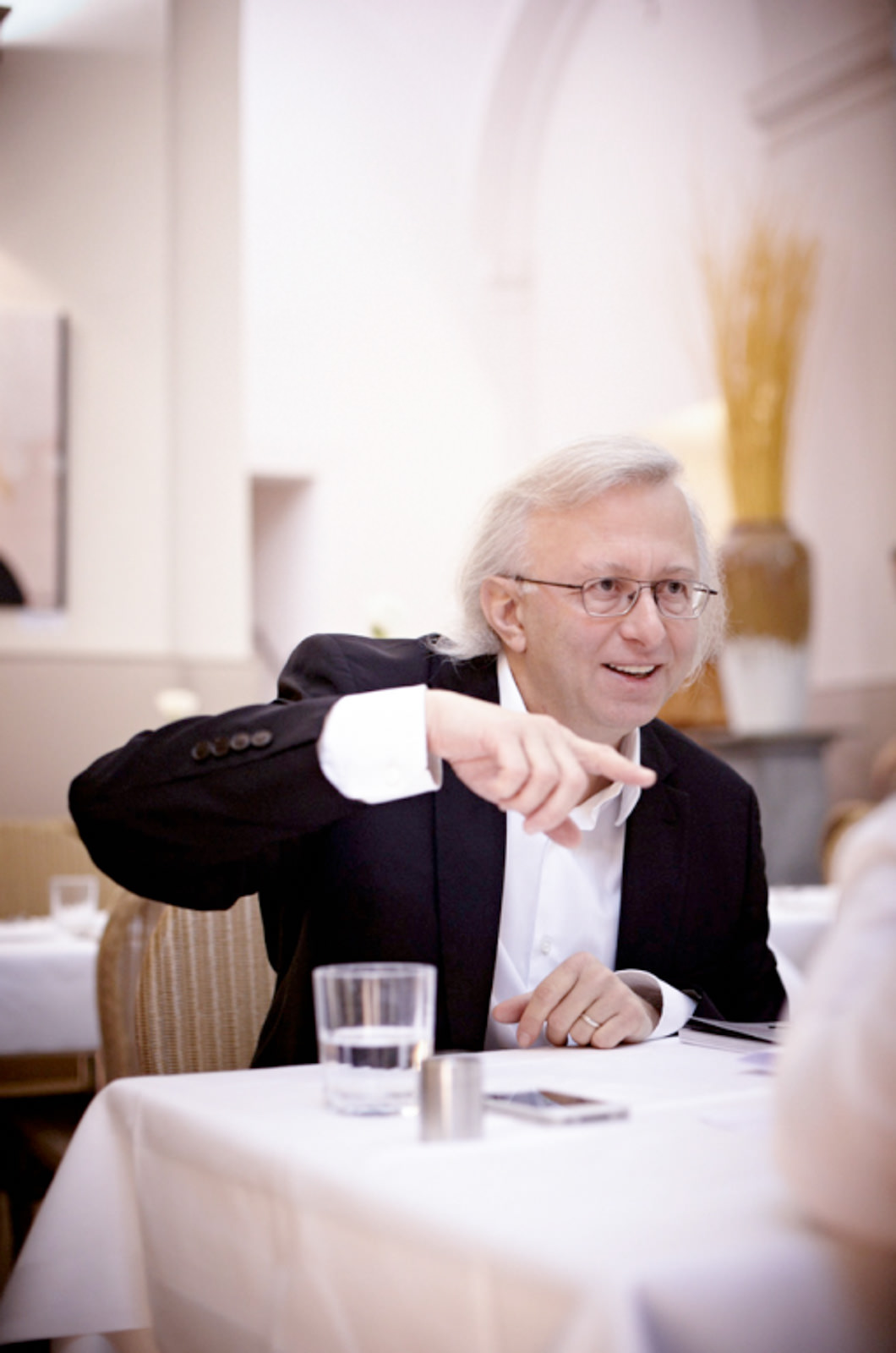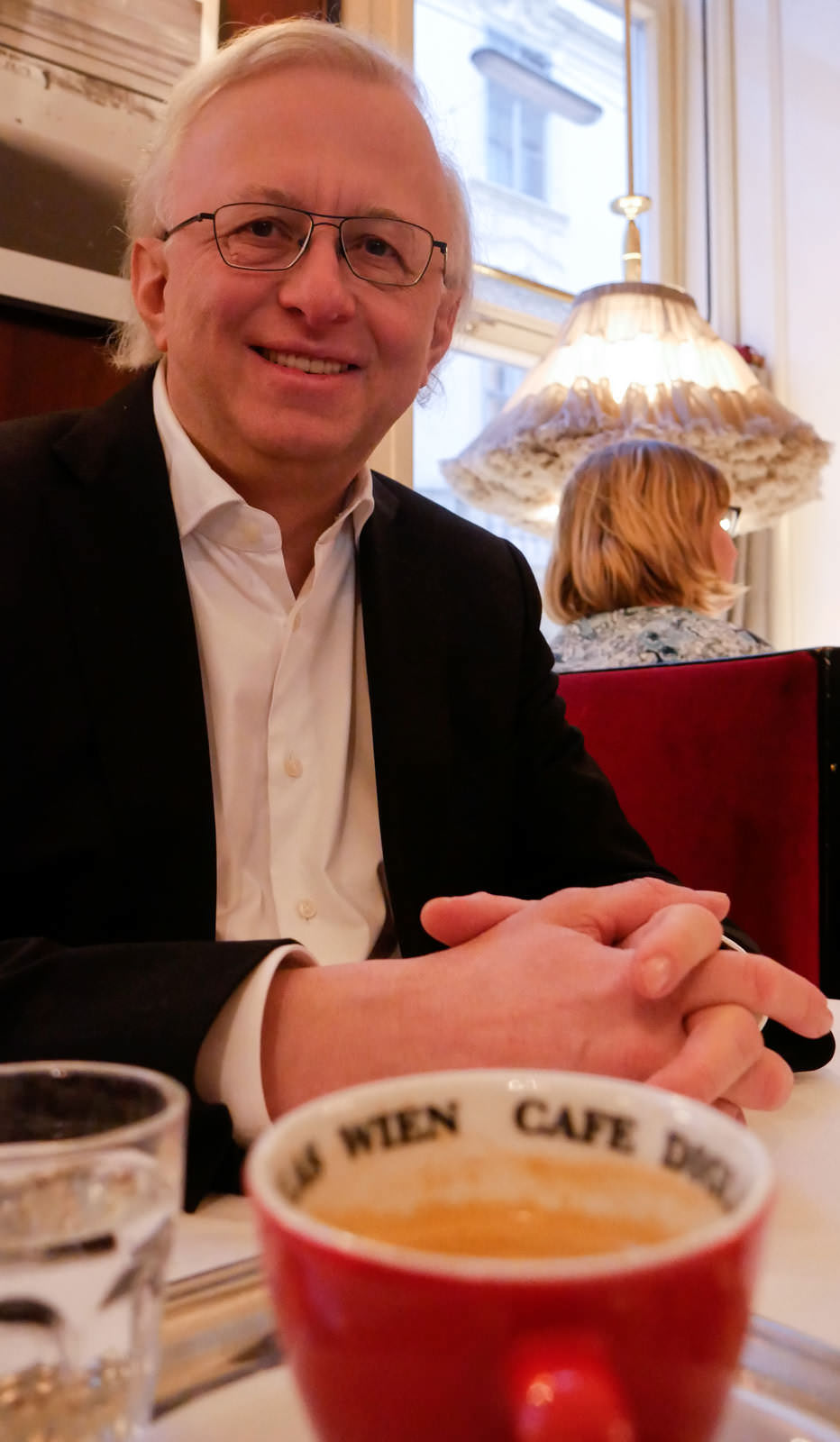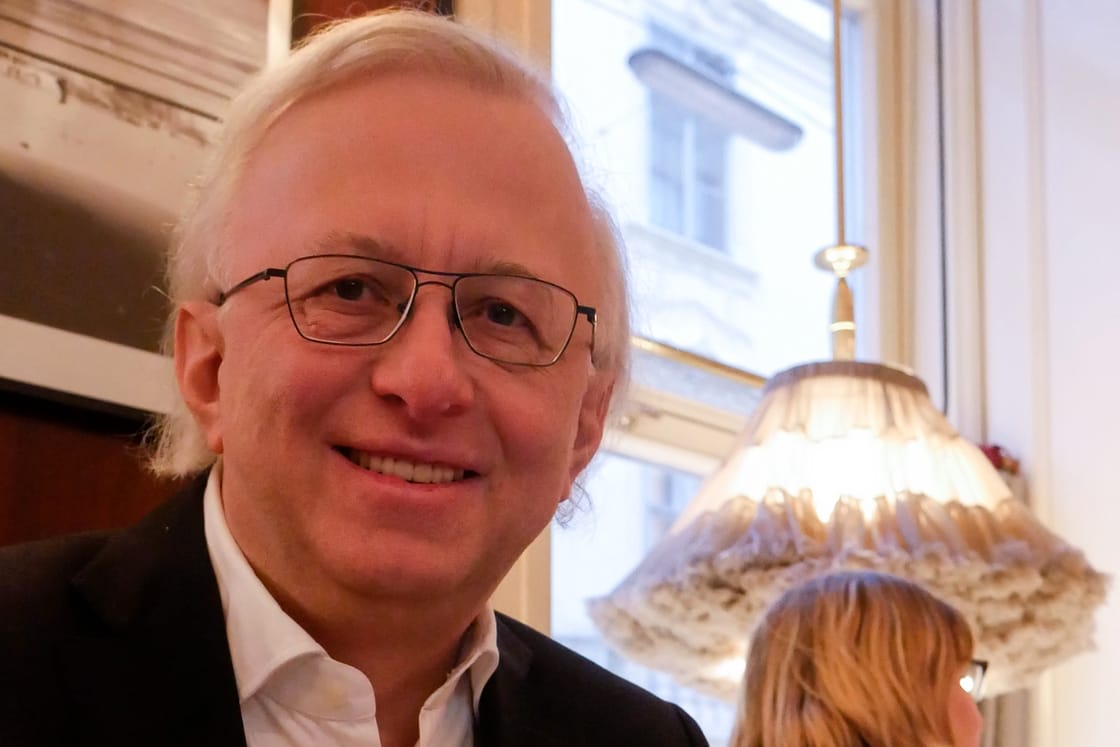Soothing staging
When it comes to the Experience Economy, the staging of brands, goods and service offerings, Dr. Christian Mikunda is an expert in demand worldwide. A native of Vienna, he studied theater and psychology and is involved in the strategic dramaturgy of public places such as shopping malls, airports, museums or hospitals, which he founded. He runs the consulting company CommEnt, is a lecturer at various universities and the author of numerous books.
Mr. Mikunda, how does marketing benefit from theater science and psychology, and what does strategic dramaturgy mean?
“Places of sale are like theaters. While the goods are being unpacked in the background, a play is taking place on the main stage. There are backdrops here, lights are set, and the employees appear in uniform clothing – so there’s not much difference between this and a theater performance or a movie. Therefore, the same dramaturgical things must be observed. For example, that the visitor’s gaze does not go into the void or encounter a cluttered totality, as I like to call it. That would be the aesthetic side, which we have neglected for far too long.
Psychology also teaches us a lot about the needs of the people who are customers here, beyond the legalities of our perception. If you can’t smile, don’t open a store – so they say, and smiling these days is the emotional experience you get as an addon. For example, the elation, Glory, that comes just by entering a retail location through a temple gate facade – a signal of emotional uplift to the people who go to a discount store. But even a hospital should not make you sick, but rather contribute to healing through its appearance.
Strategic dramaturgy aims to create experiences that increase our attention, willingness to learn and motivation. If we get everything right here, we’ll also reach our sales goals more easily.”

WSM in an interview with Dr. Christian Mikunda – the expert for the staging of brands, goods and service offers.
In your approach, the “third place” plays a central role. What makes it stand out?
“The third place joins my home, which I make comfortable for myself, and the designed workplace, which responds to my needs, for example, through attractive retreats on a factory floor. I seek out the third place not to fulfill a function, but to recharge emotionally. Nowadays, this is also possible in a discount store if it is designed accordingly.
Such a place can already be recognized by a unique sign, a so-called landmark or a header, which can be a pylon, a water-spouting mythical creature made of plants with crystal eyes or a guild sign. True to the motto: Show that you are there! A dramaturgically designed third place has a layout that provides orientation and supports my cognitive map when mailing, for example, using pavilions as landmarks over a conceptual line and a Core Attraction, a main attraction, such as a towering wine rack or a real, giant tree. These are just a few examples.”
Marketing becomes tangible in the “third places”. How does it work?
“Strategic dramaturgy ensures emotional communication. Positive experiences lead to increased attention and the release of certain neurotransmitters. This increases attention, which is measured by the Amount of Invested Mental Elaboration, or AIME value. People are drawn into the scenery, start browsing, and that in turn influences sales opportunities. It’s different in an inhospitable place – here you do only what is necessary and take flight again as quickly as possible.
For us, it’s all about creating emotional added value. To do this, you have to treat people well, not put them under pressure. I want them to perceive the place as an emotional gift, not just a brutal sales machine.”
So it’s about understanding the lives of customers….
“…exactly, we have to take the pressure out and respond to the longing for deceleration. The dramaturgical value Chill responds to this, perhaps the most important in our stressful times. Especially in a discount store, the need for calming down arises; people want to be able to take a breath. Elements with a market feel as well as small storytelling offers help here. In many pharmacies, real plants and projected green spaces provide this relaxation, which can then also be directly felt physically.”
What is the importance of materials and design?
“Incredibly important, they are triggers for what we call psychological architecture. Aluminum, stainless steel and glass ensure that formerly inhospitable places are elevated emotionally. They have incredible potential to support feelings of elation. Industrial design today pays attention to making things feel good. And that’s how the very places where you park your bike or go to take time out should be designed. Here, too, appreciation can be experienced.”
As a customer, what should I feel when I first encounter a store, a train station, or a government office?
“This is about the and before the now – about expectations. The outside area prepares visitors for the inside. Therefore, it should make a tidy impression, without the clutter caused by deliveries, wild piles of bicycles or marauding shopping carts. With appropriate buildings that create order and provide shelter, customers can be signaled that they are welcome here.”
How high do you estimate the influence of store architecture on purchasing decisions and are there any studies on this?
“There are a lot of studies on this, but I’m more interested in the culture of presentation than individual sales promotion efforts. I see myself more as an advocate for customers and try to make sure that they don’t get hurt too much in the Experience Economy places.
A good example of how strategic dramaturgy and sales promotion go hand in hand is provided by a major Swedish furniture store that has untangled a maze through staged shortcuts. Treating people well paid off. Or the offer of candy-free checkouts in the supermarket – anyone who goes shopping with children will appreciate this. It’s about gestures like that.”

WSM in an interview with Dr. Christian Mikunda – the expert for the staging of brands, goods and service offers.
What requirements arise from the dramaturgical concept for public facilities or for urban design, modern city planning?
“Cities have long since ceased to be temporary venues, for example at Christmas time, and attempts are now being made to give them a lasting emotional charge. After all, they are all competing with each other for tourists and taxpayers. Urban design gives citizens a sense of belonging and has a landmark effect on tourists; think of the illumination of the Eiffel Tower in Paris, which flickers every evening thanks to 60,000 lights. People are looking for staged places, emotional gifts in public space for which they don’t have to pay anything, for example, a deck chair on the Danube Canal in Vienna or a reopened river in Seoul that was once covered by an urban highway and through which you can now walk on glowing blue stones, there are gargoyles, open-air galleries and lighting effects of every kind. It’s an incredible place that attracts hundreds of thousands.”
Great architecture and exciting productions – that’s what we’ve seen so far, mainly from the big players. What can smaller and less potent players do?
“Lots of it, and they just have to do for it on a small scale what is usually done on a large scale, such as dramatizing an axis, as with the aforementioned river course in Seoul, or introducing a loop in a mall in England, where a tiny store selling nautical items does a great job in a few square meters. The same goes for the baker from Carinthia, who presents a 70-year-old living sourdough – this shows what it means to work with such a material.
There are endless possibilities for dramaturgical staging, and all it takes is a little courage. You can find inspiration while traveling, in museums, at the movies, in packaging design – you can benefit from all of it.”
Will you tell us about your next project?
“A new book that deals with hypnoesthetics. In it, I will show how dramaturgy can be used not only at the POS, but also for short-term therapies. After all, there are places that make you sick and places that make you feel good.”
Born out of “deadly sins” – the seven dramaturgical highs
Glory: comes from pride and is his positive side. Triggers are height, depth, vastness, which arouse temple and king feelings. Serotonin triggers power rest.
Joy: The rush of joy is the positive side of gluttony. Visual overabundance creates a cornucopia of happiness. Browsing is what makes Joy feel like a consumer. Dopamine causes exhilarated, creative alertness
Power: is anger without aggressiveness. It is created by wildness, masses of water, firestorms, power sounds, tempo intoxication. Adrenaline releases bioenergetic blockages.
Bravura: the sophistication. Positive envy (Aristotle), the ingenious solution, tool skill. Bravado generates recognition and approval.
Desire: the desire. Something is praised. We are thereby stretched to a goal, we anticipate. Dramatizes products via perceptual games. Dopamine produces hunting fever, neurotrophin “butterflies in the stomach”.
Intensity: the rapture is lust without sex. Controlled stress creates the feeling of rapture. Endorphins make us feel blissful.
Chill: the relaxing is regenerative and productive inertia. Reduced stimulus intensity through dilution: slower, quieter, simpler, cooler. StressCortisol is reduced, ChillEndovalium is activated.
Source: Christian Mikunda
Why we buy feelings
The 7 high feelings and how to awaken them.
EconPublisher 2012
